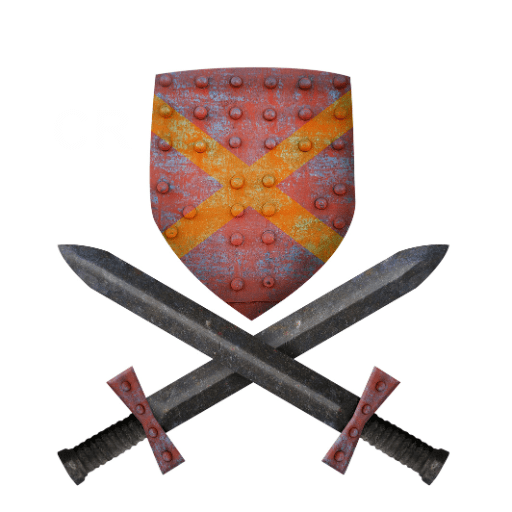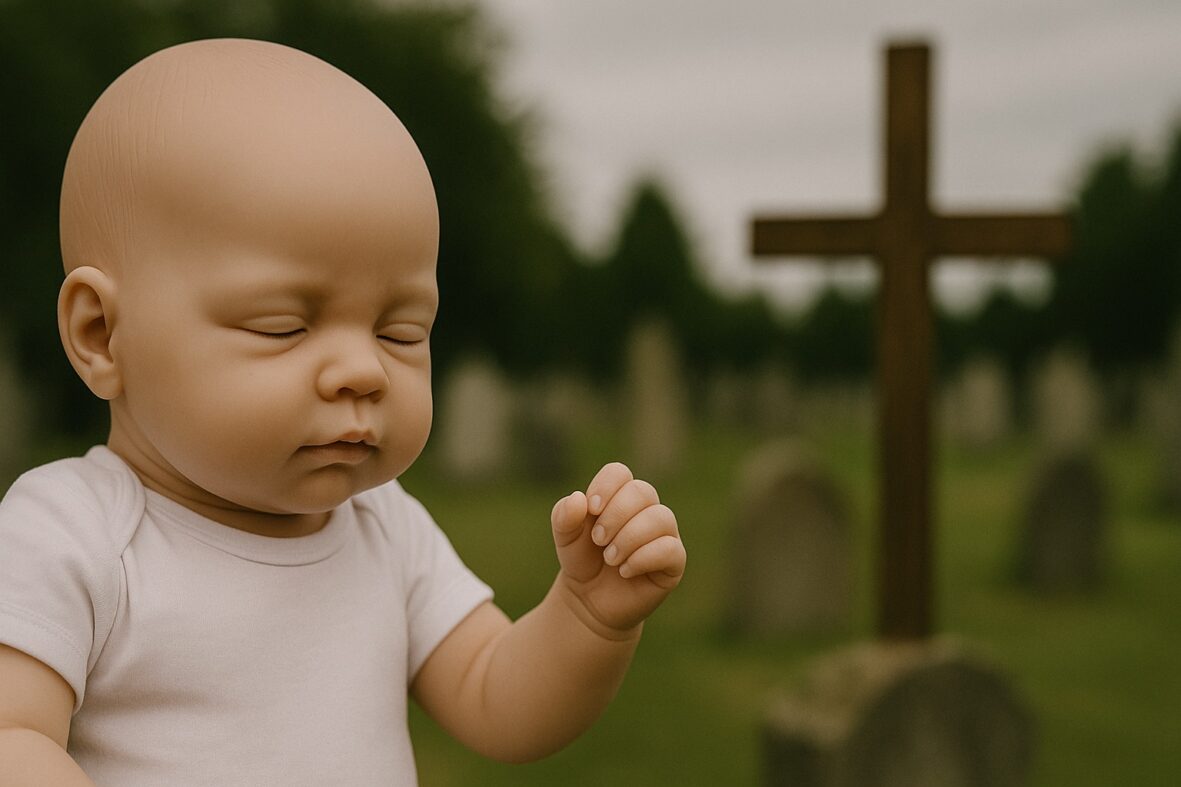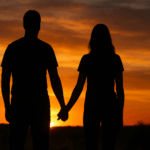Part 4 of Life and the Sanctity of Life
Scripture: Deuteronomy 30:19
“I have set before you life and death, the blessing and the curse. So choose life in order that you may live, you and your seed.” – Deuteronomy 30:19 (LSB)
As we conclude our series on the sanctity of life, we zoom out to survey the broader battlefield: the clash between a culture of death and a culture of life. In Deuteronomy 30, Moses presented the Israelites with a stark choice – life or death, urging them to choose life. That choice confronts every generation. In our modern context, what John Paul II termed the “culture of death” has seeped into many aspects of society: from abortion-on-demand, to euthanasia and assisted suicide, to rampant violence, to a nihilistic disregard for human dignity. Underlying this culture of death are powerful ideologies and idolatries. As Christian thinker Carl R. Trueman and apologist Neil Shenvi have analyzed, Western culture is deeply influenced by expressive individualism, moral relativism, and secular humanism – all of which erode the sanctity of life. Meanwhile, the biblical worldview offers a radically different vision: a culture of life where human flourishing is rooted in recognizing our Creator and the inherent worth He bestows on us. In this final article, we will contrast these two cultures. We’ll draw insights from Trueman and Shenvi on how modern philosophies (from the sexual revolution to critical theory) shape ethics and devalue life. We’ll critique the “death-loving” aspects of our culture – not only in obvious evils like abortion but also in subtler attitudes that prioritize self over responsibility. And most importantly, we will outline how Christians can actively cultivate a culture of life in our homes, churches, and society. This means more than opposing wrongs; it means building communities and habits that affirm life, encourage virtue, and point to the gospel. The stakes are high: as Deuteronomy says, it’s a matter of life and death – not just physically but spiritually and culturally. By choosing life consistently, we bear witness to the world of the life-giving King we serve.
Diagnosing the “Culture of Death”
What do we mean by a “culture of death”? It’s a strong phrase, but it fittingly describes a society whose laws, values, and entertainments often embrace death or practices that lead to death – physical or moral. Some characteristics of a culture of death include:
- Denial of the Imago Dei: When a society loses sight of people as made in God’s image, human life becomes cheap. Secularism and materialism essentially view humans as highly evolved matter, not bearers of divine worth. This makes it easier to discard lives deemed inconvenient. As Neil Shenvi notes, in a worldview without a Creator, our identity shifts – we’re seen not “vertically” in relation to God, but “horizontally” as members of groups or as individuals with desires . Our value becomes relative, not absolute. This shift underlies everything from the abortion industry to genocides: if people are just clumps of cells or cogs in a societal machine, why not eliminate those who get in the way? In contrast, Christianity insists each person, from the unborn to the elderly, from the refugee to the disabled, carries the image of God and thus a sanctity that must not be violated.
- Expressive Individualism and Autonomy Run Amok: Carl Trueman describes expressive individualism as the belief that “the purpose of life is allowing [one’s] individual psychological core to find social expression”, and anything that challenges that is “deemed oppressive.” . This mindset exalts personal choice and subjective feelings above all. While individual freedom has some good, in its extreme form it becomes an idol that justifies destructive behavior. Under expressive individualism, personal fulfillment trumps duty, truth, or even the rights of others. Think how this plays out: a mother’s “right to choose” (her autonomy) is elevated over her baby’s right to live. Or an elderly person’s choice to die on their own terms is elevated over the community’s duty to care for them. Or in sexual ethics: any restraint on sexual expression is seen as intolerable – leading to broken families, fatherlessness, and more situations where unborn babies are seen as “obstacles” to one’s self-actualization. Trueman points out that this notion of self, where *anything that impinges### (continued) Diagnosing the “Culture of Death”
… impinges on one’s choices is considered oppression, has led to what Trueman calls the “creedal non-negotiable” of modern secular culture: personal autonomy. In such a climate, sacrifice for others is devalued and “my choice” becomes sacrosanct, even if that choice involves ending a life. Abortion advocacy has become exultant, as Trueman observed: “The move from abortion being sold as ‘safe, legal, and rare’ to being celebrated as a social good is revealing… something deeper has taken place within our culture.” He argues it reveals a “desire for desecration – to destroy what is sacred” . In a culture that worships the self, the unborn child’s sacred life, which demands self-restraint or care, is targeted as an enemy to personal freedom. This is the dark fruit of extreme individualism unmoored from moral absolutes.
- Moral Relativism and Loss of Truth: The culture of death is enabled by the belief that “you have your truth, I have mine.” If there are no objective moral truths, then who’s to say murder is wrong? Society still generally condemns killing persons, but then redefines certain humans (the unborn, the terminally ill, etc.) as non-persons to rationalize killing them. This echoes past atrocities: every genocide or slavery system began by defining the victims as less than human. Today, sophisticated arguments attempt to do the same. For instance, pro-abortion philosophers claim an unborn baby is not a “person” until some later stage of development (consciousness, viability, etc.). These criteria are arbitrary and dehumanizing, but they gain traction in a relativistic age where truth is sidelined by preference. Neil Shenvi’s critique of critical theory highlights that it “offers a different worldview” and “different answers to basic questions: Who are we? What’s our problem? What’s the solution?”. If one’s worldview doesn’t see sin as the problem or God’s truth as the answer, then human life is not protected by divine command, and evils can be justified as solutions to other problems (e.g., abortion framed as a solution to poverty or inconvenience). The result: a culture that intellectually justifies evil, calling it good (Isaiah 5:20).
- Entertainment and Media Numbness: In a culture of death, even recreation often glamorizes death. Consider how violent movies, TV, and video games have become mainstream. Many children grow up seeing thousands of on-screen killings, which can desensitize them to real-life violence. While not all become violent, the devaluation of life seeps in subtly. Likewise, pornography (a form of exploitation often linked to sexual violence and human trafficking) objectifies persons as means to an end, a mindset adjacent to the devaluation seen in abortion or euthanasia. The “value-free” media environment actually catechizes people in relativism, expressive individualism, and self-indulgence, corroding virtues like chastity, empathy, and self-giving love – virtues essential to a culture of life.
- Despising Dependency and Suffering: Our society increasingly sees dependent people (the very young, disabled, very old) as burdens. Instead of recognizing caring for the vulnerable as a mark of civilization, a culture of death resents it. The legalization of assisted suicide and euthanasia in a growing number of places exposes this: rather than support people in suffering, it offers them death as a solution. In Canada, for example, in 2023, a staggering 4.7% of all deaths were through euthanasia (MAiD), and there have been over 60,000 euthanasia deaths since legalization in 2016. Reports show that some Canadians opted for MAiD because they felt like a burden or lacked support . This is a grim indicator of a society that would rather eliminate suffering by eliminating the sufferer than alleviate the suffering. It’s the ultimate individualism: even life itself is treated as disposable if it doesn’t meet certain criteria of quality. As ethicist Wesley J. Smith notes, “the ‘right to die’ can so easily become the duty to die” in cultures that prize efficiency and autonomy over compassion. Instead of solidarity with the suffering, the culture of death offers them solitude and a syringe.
All these facets – denial of imago Dei, radical selfism, moral relativism, desensitization, and rejection of dependency – are threads in a tapestry of death. They reinforce each other. For example, expressive individualism fuels moral relativism (“my truth”), and both feed into practices like abortion or euthanasia. Neil Shenvi points out how Critical Theory often labels the Christian pro-life stance as “oppressive”, flipping moral reality on its head. Indeed, good is called evil, and evil good.
Yet, diagnosing this culture of death is not enough; we must also articulate the alternative: the culture of life. It’s not sufficient to curse the darkness; we must light a candle.
The Biblical Vision: A Culture of Life and Human Flourishing
A culture of life arises when the biblical worldview permeates a society’s values and institutions. It cherishes life at all stages and promotes the well-being of individuals and communities in accordance with God’s design. Key elements include:
- Recognition of Sacred Worth: In a culture of life, people are seen first and foremost as God’s image-bearers. This truth from Genesis 1:27 is foundational. It bestows inalienable rights and dignity. This was the Judeo-Christian contribution that revolutionized the ancient world – as John Stonestreet and others have noted, “Among the pagan practices vanquished by early Christians was infanticide”. Roman culture routinely practiced exposure (leaving unwanted infants to die). Christians, recognizing every baby as God’s child, rescued and raised those children. They effectively created a counter-culture of life in the midst of a culture of death. They did it because they saw even the “weak or abnormal” infants (whom Seneca said Romans would drown) as neighbors to be loved. A contemporary culture of life similarly upholds that every life is precious. This will manifest in strong legal protections for life (anti-abortion laws, bans on euthanasia, etc.) and in social norms of inclusion (e.g., making sure public spaces and churches welcome those with disabilities, supporting pregnancy and parenting). The late theologian Francis Schaeffer said that how a society treats its weakest members is a measure of its righteousness. In a culture of life, the worth of the vulnerable is championed, not questioned.
- Community and Responsibility: Contrary to expressive individualism, the biblical vision emphasizes that we are relational beings in community. We are our “brother’s keeper” (Gen 4:9). The family, as created by God, is the basic unit of society for nurturing life. A culture of life strengthens marriages and families because these are protective factors for both born and unborn. It encourages fatherhood responsibility and motherhood support. It upholds sexual ethics (like chastity and fidelity) that channel procreation into stable, loving contexts. By contrast, the culture of death’s sexual free-for-all leads to broken families, which often correlates with higher abortion, poverty, and crime. Christian ethicist Wayne Grudem and others often connect a biblical sexual ethic with life: God’s design for marriage, permanence, and openness to children fosters a pro-life environment where children (expected or unexpected) are welcomed. Additionally, a culture of life values intergenerational bonds – grandparents, parents, children caring for one another – as seen in scriptures like 1 Timothy 5. It also fosters a sense of societal responsibility for the “least of these” (Matt 25:40). Instead of “every man for himself,” the church models a community where “if one member suffers, all suffer” (1 Cor 12:26). Neil Shenvi points out that Christianity uniquely provides “identity markers that unify people across lines” – all created, all sinful, all offered redemption – which “undermines” divisive ideologies. So a culture influenced by Christianity will stress solidarity over division, compassion over competition. That means better care for the poor, pregnant women, the sick, etc., reducing the perceived “need” for things like abortion or euthanasia.
- Objective Moral Order (Truth with Love): A culture of life is grounded in the acknowledgment of transcendent moral truth. People submit to God’s moral law (written on hearts and in Scripture) rather than make up their own rules. This fosters genuine human flourishing, because God’s commands (like “do not murder”) protect us from destructive paths. However, this truth is tempered with love and mercy. It’s not a harsh theocracy; it’s a society where laws are just and compassionate. For instance, a pro-life law in a culture of life would punish the exploiters (like unscrupulous abortionists) but offer grace and alternatives to women in crisis. Think of how ancient Israel’s law commanded leaving gleanings in fields for the poor (Lev 19:9-10) – combining justice with mercy. In a modern sense, that might mean making adoption easier and more celebrated, providing funding for maternal healthcare, and ensuring no one feels abortion is their only option. The truth is that abortion is wrong; the love is providing every support to choose life. Similarly, the truth is life is God’s to give and take; the love is investing in hospice and pain management to walk with the dying rather than abandon them. A culture of life values palliative care over lethal injection. It speaks truth about the value of suffering – not that suffering is good in itself, but that it can have purpose and is better met with love than with death. It recalls that Christ suffered with us. This counters the narrative that equates suffering with loss of dignity. Instead, as many disability advocates say, “Our dignity isn’t defined by our independence.” In a culture of life, people aren’t afraid to be dependent because they know they’ll be cared for and still respected.
- Celebration of Life and Beauty: While a culture of death is marked by cynicism and darkness in art and media, a culture of life celebrates beauty, creativity, and joy in living. Think of how Christianity historically inspired art, music, and literature that exalted life’s goodness under God – from Bach’s compositions to cathedrals to joyful hymns. Not that all art must be “religious,” but when a culture honors life, its entertainment and art will more likely honor what is good, true, and beautiful. There will be stories of heroism, sacrifice, and redemption, rather than nihilistic or exploitative content. Family-friendly entertainment will thrive, not as an afterthought, but because the culture understands the formative power of media on youth. A culture of life also encourages gratitude – for the gift of life, the bounty of creation – instead of entitlement. This might extend even to how we treat creation itself: we care for the environment not as an end in itself, but because it sustains life and is part of God’s handiwork entrusted to us. (This avoids the extreme of some secular environmentalism that values nature over human life, but promotes stewardship that benefits humans and animals.) Overall, the atmosphere in a culture of life is one of hope and possibility, versus the despair and futility that pervades a culture of death.
History gives glimpses of what a culture of life can achieve. For instance, where the gospel spread, practices like infanticide, gladiatorial games (killing for sport), and human sacrifice were abolished. Hospitals and charities sprouted from Christian love (the word “hospital” comes from Christian hospitality). Slavery, though tragically practiced even by some Christians, was ultimately largely abolished through the efforts of believers like William Wilberforce who applied biblical principles of human dignity. None of these strides were perfect or complete, but they showed the leavening effect of Christian ethics on society. They stand in stark contrast to regimes explicitly built on atheistic or materialistic ideologies (Nazi Germany, Soviet communism, Mao’s China), which became notorious cultures of death with genocides, gulags, and eugenic killings.
Our contemporary Western culture is more subtle; it retains some Judeo-Christian residue (we still generally think murder is wrong), but it’s increasingly secular and “re-paganized” in its ethics (e.g., new forms of child sacrifice via abortion, new forms of euthanasia). As Carl Trueman and others note, we’re living through a “second Fall”, a rejection of Christian morality akin to ancient Rome’s decadence. Trueman’s work, The Rise and Triumph of the Modern Self, traces how thinkers like Rousseau, Freud, and others laid groundwork for today’s expressive individualism, especially around sexuality. Meanwhile, Neil Shenvi warns how critical theory can frame pro-life views as “oppression” and actually undermine the idea of universal human dignity by focusing on group identities. Both voices call Christians to understand the times – we must know the ideologies we’re up against to respond effectively.
Engaging and Transforming the Culture
How can Christians counter the culture of death and foster a culture of life? Scripture calls us to be both prophets and ambassadors: confronting evil (Eph 5:11) and pleading with people to be reconciled to God (2 Cor 5:20). Here are strategic areas and practical steps:
1. Renew the Church’s Mindset: Judgment begins at the house of God (1 Peter 4:17). We must ensure our own worldview is thoroughly biblical, not swayed by secular culture. Pastors and teachers should proactively address the false ideologies creeping in. Carl Trueman’s analysis of expressive individualism and the sexual revolution should be discussed in Sunday School or seminars, so believers see how things like the redefinition of gender or the normalization of assisted suicide stem from false ideas about the self. Neil Shenvi’s warnings about critical theory can help the church avoid syncretism with worldly justice movements that inadvertently devalue life (for example, some “reproductive justice” activism justifies abortion as a social good). Instead, we ground justice in the objective truth of God’s Word. The better we disciple our people to think Christianly, the more they will naturally create micro-cultures of life in their families and vocations.
2. Strengthen Christian Families and Education: The family is a bulwark against the culture of death. Churches must invest heavily in marriage support, parenting classes, youth discipleship, and robust Christian education (whether through strong church teaching or Christian schools/homeschool support). Why? Because a child who is taught early on that God made them, that their life has purpose, and that virtue matters, is far less likely to embrace the lies of the culture of death. They’ll be less susceptible to peer pressure to have premarital sex (leading to less teen pregnancy/abortion). They’ll be equipped to stand for truth in college where relativism often reigns. Christian schools and homeschools can also integrate a consistent life ethic into the curriculum – teaching about abortion and euthanasia as part of a broader ethics class, not in a reactive way but as part of understanding what loving one’s neighbor means. Imagine students reading Letter from a Birmingham Jail (on racial justice) alongside The Gospel of Life (John Paul II’s writing on abortion) and discussing how both address human dignity. The pro-life cause must be integrated with other justice issues in Christian education, so young people see it as part of their holistic Christian duty. We also need to teach critical thinking to navigate media influence. For instance, a youth group might analyze how a popular show portrays sex or violence and contrast it with Philippians 4:8’s call to think on what’s pure and good.
3. Public Policy and Advocacy: While changing hearts is paramount, changing laws is also vital. William Wilberforce didn’t just preach against slavery; he changed laws to end it. Similarly, Christians should engage in the public square to enact laws that protect life. This includes pro-life legislation (banning or at least limiting abortion – recent state-level battles post-Dobbs ruling have shown both victories and setbacks; we must persist), laws against assisted suicide/euthanasia, and laws that support families (e.g., child tax credits, adoption incentives, or healthcare reforms). We should also work to curtail bioethical threats like human cloning or destructive embryonic stem cell research – new frontiers of the sanctity of life debate. A key element is persuasion: as John Stonestreet often says, we need to make abortion unthinkable, not just illegal. This means our advocacy should come with winsome argument. We can use science (ultrasound imagery, fetal development facts) and human rights language to argue for the unborn. We can highlight how euthanasia laws exploit the vulnerable and how palliative care is the humane alternative. Some progress has been made: abortion rates overall had dropped significantly since 1990 (a 40% lower number in 2020 vs 1991), showing that sustained efforts in law, messaging, and support can work – though the recent uptick in 2023 is worrisome. We must adapt strategies to our current moment, using fresh data and continuing the fight against complacency. Organizations like the Colson Center and Alliance Defending Freedom equip Christians for these policy debates, drawing from thinkers like Trueman and Shenvi to address underlying worldview issues (e.g., how the transgender movement’s redefinition of personhood might lead to new ways of undermining life’s sacredness).
4. Personal Witness and Grassroots Action: Culture is often changed from the bottom up. Every Christian home, school, business, and community presence can be an outpost of the culture of life. Some practical examples: participate in or start a “life team” at your church that coordinates local pro-life activities (pregnancy center liaisons, 40 Days for Life prayer campaigns, volunteering at hospices or disability ministries, etc.). Engage in foster care or support those who do– as we discussed in Part 2, being truly pro-life includes caring for children who are already born and need families. If thousands more churches rallied around the foster system, we’d showcase an answer to the challenge “pro-lifers only care about the unborn.” On campuses or at work, be the one who respectfully challenges casual pro-abortion or pro-euthanasia rhetoric, not with rancor but with thoughtful questions and facts. For instance, if a colleague says, “It’s compassionate to allow assisted suicide,” you might respond, “I hear that concern for suffering. I used to think that way until I learned that in places with assisted suicide, many choose it because they’re lonely or feel like a burden . Wouldn’t it be more compassionate to address those root issues?” That kind of gentle push can plant seeds. Additionally, support pro-life and pro-family businesses and media. E.g., subscribe to or share content from publishers and filmmakers who uphold life and Christian values. We must create and consume alternative media that portrays our worldview attractively. Every Christian can also be involved in prayer – do not underestimate consistent prayer for cultural revival. Pray for leaders, pray for influencers in Hollywood to convert (it’s happened before!), pray for a new Great Awakening that would, as a byproduct, make our nation embrace life. The abolition of slavery in Britain followed a revival; perhaps the abolition of abortion can follow a new revival here.
5. Cultivate Hope and Avoid Despair: Finally, as we engage the dark aspects of culture, we must do so from a posture of hope. Deuteronomy 30:19’s call to “choose life” came with a promise of blessing for obedience . We know ultimately, Life Himself (Jesus) has overcome death. The resurrection is the guarantee that death does not win in the end. Therefore, we are not doomers. Even as we speak honestly about how far our culture has fallen (as Trueman does when he laments the unserious and desecrating nature of modern politics ), we do so with the conviction that the gospel can turn things around. Look at the pro-life movement’s resilience: for nearly 50 years Roe v. Wade was the law, yet pro-lifers worked, prayed, voted, and did compassion work – and in 2022, Roe was overturned, something many thought impossible. That’s a tangible hope event. It doesn’t mean the battle is over (in fact it moved to 50 state battles), but it proves hearts and minds can change and justice can advance. The early church was a tiny minority in a vast empire, yet they ended up changing that empire profoundly. We may feel like exiles in our own land now, but as in Jeremiah 29, we’re to seek the welfare of the city where we are, plant gardens, raise families – i.e., build for the future. If we despair and drop out, the culture of death wins by default. If we persevere in hope, we entrust the results to God.
Chuck Colson used to say, “Despair is a sin”, because it’s essentially giving up on God’s power in history. Instead, we remember promises like John 1:5, “The light shines in the darkness, and the darkness has not overcome it.” The Church is called to be that light, a “city on a hill” (Matt 5:14). This means our churches and communities should themselves model the culture of life so beautifully that others are drawn in. Imagine a local church that is known in the town for always stepping up to help when someone is in crisis pregnancy or when an elderly person has no family – a church that runs the best daycare, the most welcoming disability ministry, etc. That church will not only save lives, it will save souls, because people will see “how they love one another.”
Closing Reflection
Moses’ challenge in Deuteronomy – “choose life” – echoes to us today at a societal level. Our culture is at a crossroads with issues like genetic engineering, AI ethics, and more looming. Will we apply God’s wisdom to these or the spirit of the age? The contrast between the culture of death and the culture of life could not be more stark: one worships self and ends in emptiness and bloodshed; the other worships God and leads to fullness and peace.
Carl Trueman wrote about “the inadequacy of characterizing our modern world as ‘disenchanted.’” He suggests it’s actually “marked by desecration”, a willful destruction of the sacred . If that is so, the task for Christians is resacralization – to re-infuse our world with the sense of the sacred, especially the sacredness of human life. How? By our words and deeds that consistently honor God and honor His image in others.
Neil Shenvi and others remind us that ideas have consequences. So as we preach the Idea of the gospel – that God became man, died and rose to save us – that biggest Idea can have the biggest consequence: transforming individuals, and in time, cultures. We may not usher in utopia (that awaits Christ’s return), but we can push back the effects of the Fall and “occupy until He comes” (Luke 19:13 KJV).
In this four-part journey, we started in the womb with Psalm 139’s awe at life’s beginning, and we end with Deuteronomy’s call to choose life in every arena. We moved through the sanctuary of the family and church, into the valley of post-abortion pain and up to the high ground of cultural engagement. It’s one grand narrative of affirming life as God’s gift.
Perhaps the best closing is to recall the words of Jesus in John 10:10: “The thief comes only to steal and kill and destroy; I came that they may have life, and have it abundantly.” The culture of death is the thief – stealing innocence, killing bodies, destroying souls. But Jesus is the Life-giver. As His followers, we are to be agents of abundant life. We do that by sharing the gospel (which gives eternal life) and by living out its implications (which enhance life here and now).
So to every Christian reader: Choose life. In your personal decisions, in your family values, in your civic duties – choose the path that leads to life. And invite others to do the same. By doing so, we not only save lives; we save cultures and point them to the One who is “the way, the truth, and the life” (John 14:6).
Closing Charge: “Today, I have set before you life and death… Now choose life, so that you and your children may live, and that you may love the LORD your God, listen to His voice, and hold fast to Him, for He is your life” (Deut 30:19–20, paraphrased).
May we hold fast to Christ, our life, as we strive to build a culture that treasures every human life He has made.
Sources
- Holy Bible, Legacy Standard Bible (LSB), 2021 by The Lockman Foundation.
- Pew Research Center – Abortion statistics and trends.
- NPR / Guttmacher Institute – U.S. abortion estimates for 2023.
- Joint Economic Committee Report – Down syndrome abortion rates.
- World Health Organization – Global abortion facts.
- Carl R. Trueman – First Things article on abortion advocacy ; Heritage Foundation report on expressive individualism.
- Neil Shenvi – Analysis of Critical Theory vs. Christianity.
- Christianity Today – Post-abortion ministry insights (Carrie Bond quote, Abby Johnson tweet).
- John Stonestreet & Roberto Rivera – BreakPoint commentary on euthanasia and the elderly.
- John Stonestreet & Jared Hayden – Colson Center on pro-life advocacy post-Roe.
- John Stonestreet – “The Pagan Logic of Infanticide” (BreakPoint).
- The Joint Economic Committee – Down syndrome report (Key stat: 60-90% aborted).
- Charlotte Lozier Institute – Pregnancy Center fact sheet (3,000 centers in U.S.).
- Students for Life / Lozier – Pregnancy centers vs. Planned Parenthood (14:1 ratio, 585 PP clinics).
- 2 Corinthians 5:17 – New creation in Christ .
- Deuteronomy 30:19 – “Choose life” command .
← Previous: Healing After Abortion: Redemption Through Christ
View all of Life and the Sanctity of Life








